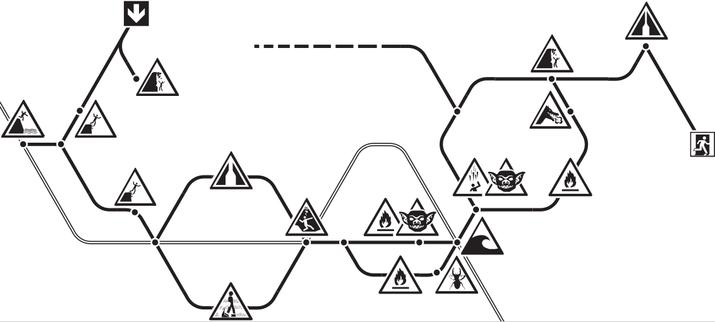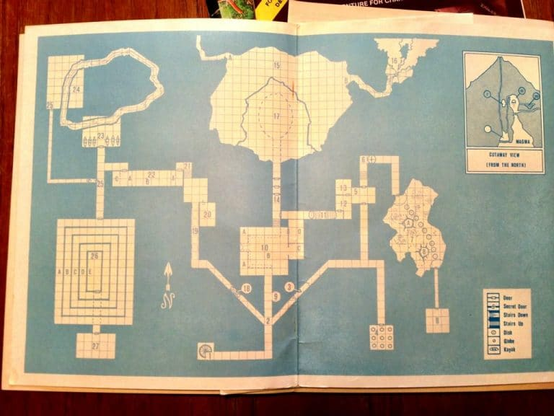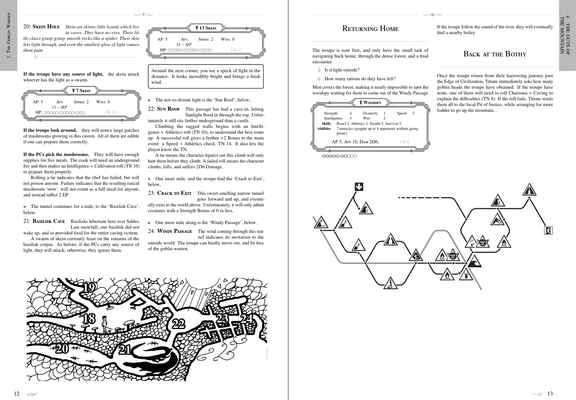Why do we make tiny dungeons, with cramped maps? Real caverns meander, like twenty miles of dropped spaghetti.
And the only way to represent miles of spaghetti is a metro-map.
It'll go onto the module once it's labelled.
Still unsure if it should go at the start (traditional, expected), or the end (summarizes information, no need to front-load the reader's brain).
@icedquinn
The tradition is much older than WotC minis - TSR had it as standard.
Above-ground maps were massive, but underground maps much smaller.
@malin ttrpg maps should resemble napkin sketches or drawings in sand. This is a nice start.
@malin The inheritance of miniature wargames that led to TTRPGs played with minatures and how playing on the table, with a square or hex grid becomes a restraining element, especially if people insist on nitpicking about distances instead of winging it, as most TTRPGs should be played.
@Illuminatus
Sure - precise measurements fit wargames well, but the precise measurements in most old D&D supplements were just '20 by 40 foot room'...so I feel like the audience got it at that point.
Or one could just add a detailed image of each area, separately from the map.
Or just a shit image of each area.[fig 1] You don't need much detail if the room descriptions already tell you what you need.
@malin When I discovered 'Mörk Borg' I liked a lot the implicit way distances and PC movement were treated by defining the duration of a round "A round is enough time to make an
attack (or use a Power) and traverse
a normal-sized room. There are
usually 10 rounds in one minute."



